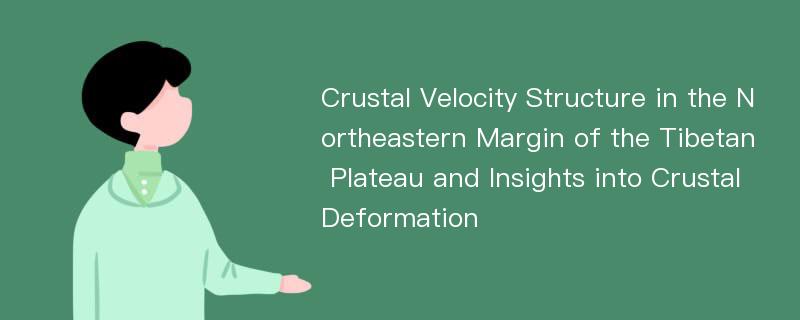
论文摘要
The transitional area between the northeastern margin of the Tibetan Plateau, Ordos Block and Alxa Block, also being the northern segment of the North-South Seismic Belt, is characterized by considerably high seismicity level and high risk of strong earthquakes. In view of the special tectonic environment and deep tectonic setting in this area, this study used two seismic wide-angle reflection/refraction cross profiles for double constraining, so as to more reliably obtain the finescale velocity structure characteristics in both the shallow and deep crust of individual blocks and their boundaries in the study area, and further discuss the seismogenic environment in seismic zones with strong historical earthquakes. In this paper, the P-wave data from the two profiles are processed and interpreted, and two-dimensional crustal velocity structure models along the two profiles are constructed by travel time forward modeling. The results show that there are great differences in velocity structure, shape of intra-crustal interfaces and crustal thickness among different blocks sampled by the two seismic profiles. The crustal thickness along the Lanzhou-Huianbu-Yulin Seismic Sounding Profile(L1) increases from ~43 km in the western margin of Ordos Block to ~56 km in the Qilian Block to the west. In the Ordos Block, the velocity contours vary gently, and the average velocity of the crust is about 6.30 km s-1; On the other hand, the velocity structures in the crust of the Qilian Block and the arc-like tectonic zone vary dramatically, and the average crustal velocities in these areas are about 0.10 km s-1 lower than that of the Ordos Block. In addition, discontinuous low-velocity bodies(LVZ1 and LVZ2) are identified in the crust of the Qilian Block and the arc-like tectonic zone, the velocity of which is 0.10~0.20 km s-1 lower than that of the surroundings. The average crustal thickness of the Ordos Block is consistently estimated to be around 43 km along both Profile L2(TongchuanHuianbu-Alashan Left Banner Seismic Sounding Profile) and Profile L1. In contrast to the gently varying intra-crustal interfaces and velocity contours in the Ordos Block along Profile L1, which is a typical structure characteristic of stable cratons, the crustal structure in the Ordos Block along Profile L2 exhibits rather complex variations. This indicates the presence of significant structural differences in the crust within the Ordos Block. The crustal structure of the Helan Mountain Orogenic Belt and the Yinchuan Basin is featured by "uplift and depression" undulations, showing the characteristics of localized compressional deformation. Moreover, there are low-velocity zones with alternative high and low velocities in the middle and lower crust beneath the Helan Mountain, where the velocity is about 0.15~0.25 km s-1 lower than that of the surrounding areas. The crustal thickness of the Alxa Block is about 49 km, and the velocity contours in the upper and middle-lower
论文目录
文章来源
类型: 国际会议
作者: WANG Shuaijun,LIU Baojin,SONG Xianghui,LI Yiqing,DENG Xiaoguo,BAO Xiumin
来源: 第九届世界华人地质科学研讨会 2019-06-01
年度: 2019
分类: 基础科学
专业: 地质学,地球物理学
单位: Geophysical Exploration Center,China Earthquake AdministrationShengyang Seismic Station,Earthquake Administration of Liaoning Province
分类号: P315.2
DOI: 10.26914/c.cnkihy.2019.028409
页码: 231-232
总页数: 2
文件大小: 147k
下载量: 2
